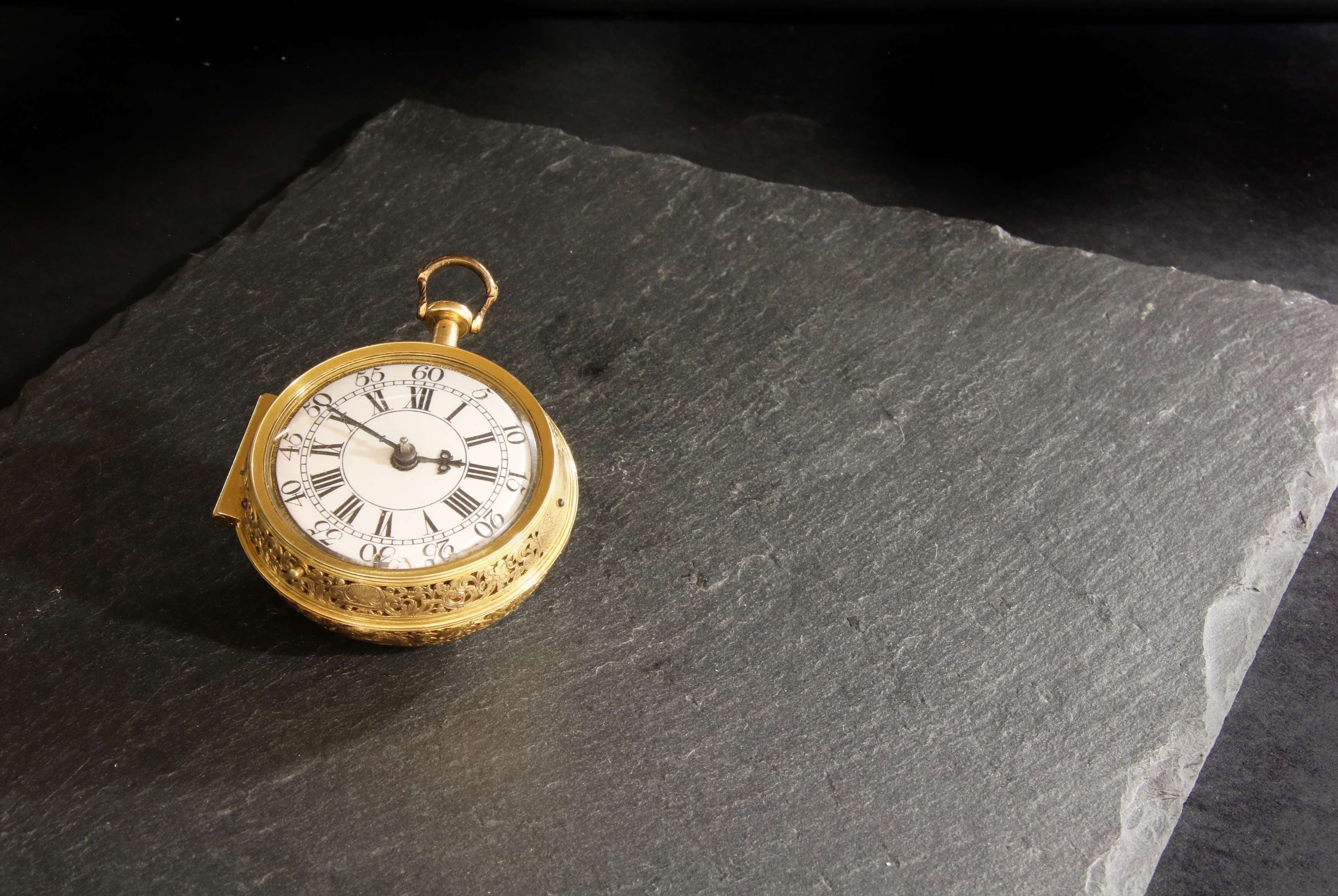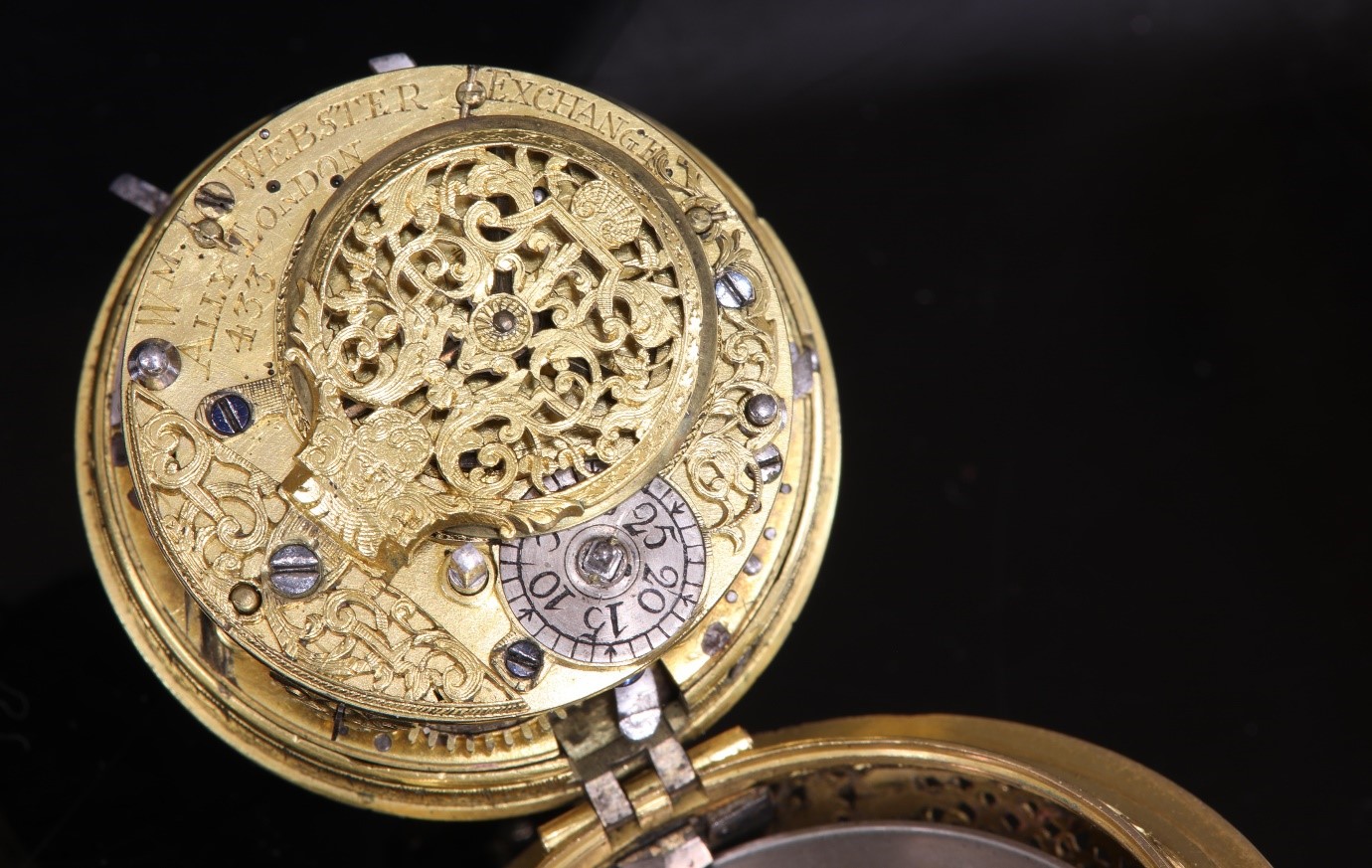William Webster
A look into the close apprentice of Thomas Tompion
Here we take a look at the exquisite craftsmanship of William Webster, the former apprentice of the 'father of British clock making, Thomas Tompion. In conjunction with the subject of his fine artistry, the article focuses on the unique qualities of a 22 carat gold fine William Webster verge watch which will appear in our live Fine Jewellery auction on Tuesday 7th July
A 22ct gold fine William Webster quarter verge watch c.1715
Estimate - £3,500 - £4,000
Four days after the death of the ‘father of British clockmaking’ Thomas Tompion in 1713, one of his former apprentices William Webster placed an advert in the London Gazette. It stated: 'This is to certify all Persons of whatever Quality or Distinction that William Webster, at the Dial and Three Crowns in Exchange-Ally London, served his Apprenticeship, and served as a Journeyman a Considerable Time with the said Mr Tompion, and by his Industry and Care is fully acquainted with his Secrets in the said Art'.
Webster had worked in Tompion’s famous workshop ‘at the sign of the Dial and Three Crowns’ in Water Lane from 1702 until 1710 so was well placed to pitch for some of his former master’s famously wealthy clientele.
Some idea of his technical prowess can be seen in a handsome George I verge pocket watch that forms part of Sworders’ sale of Fine Jewellery, Watches and Designer Handbags to be held ‘live online’ on 7th July. Signed for Webster of Exchange Ally, London no.433, this watch has a quarter repeating mechanism (very much in the manner of Tompion) meaning it can strike both the number of hours, and then (at a different pitch) the number of quarter hours.
In addition to this expensive complication is a deluxe pierced and engraved 22ct gold case with vignettes of rural scenes and masks and what may be an original leather covered protective outer case. Perhaps 20 years after it was made c.1715 the original dial (probably gold and champlevé enamel) was updated to meet the fashion for the new 'white' dials that first took off in the 1730s.
The watch was last sold at auction in London in 1967 and has been privately owned by the same family since 1968. The estimate at Sworders next month is £3,500-4,000.
For more information about this lot, or the sale, please contact
Catriona Smith | jewellery@sworder.co.uk
Recent News
John Ruskin | A Remarkable Archive Comes to Auction at Sworders
A major highlight of our forthcoming 'DREAMS | A Unique Private Collection' sale on 9 July is a remarkable archive of letters and manuscripts by John Ruskin (1819–1900), the celebrated Victorian polymath. This unparalleled group – numbering in the hundreds – is believed to be the largest collection of Ruskin correspondence in private hands and spans a vast range of topics from art and architecture to politics, religion, and personal reflection.
2 July 2025
Valuation Day Discovery
'The Scented Garden of Abdullah the Satirist of Shiraz' - also known as 'The Bagh-i-Muattar' - quickly caught the attention of our book specialists, when a copy bound in full vellum was brought in by a local client to our weekly valuation day.
2 July 2025
The Glass Sale | A Medium of Light, Form and Infinite Expression
We are thrilled to launch The Glass Sale - a brand-new addition to our auction calendar! The inaugural sale will take place on Tuesday 28 October and will become a biannual fixture in our calendar going forward.
20 June 2025

